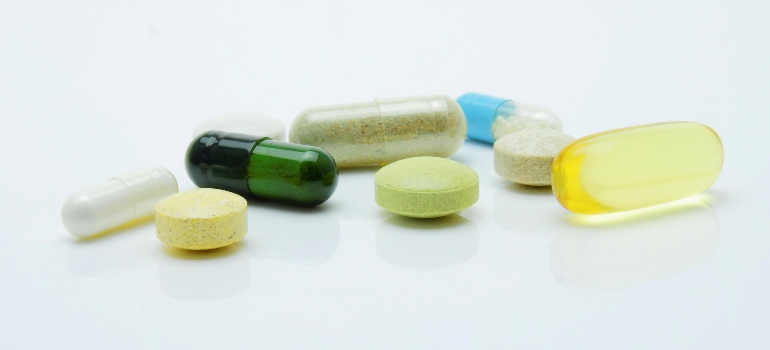Risks of Mixing Gabapentin and Tramadol
Mixing medications can be risky, and it’s important to understand the potential dangers. Gabapentin and tramadol are both commonly prescribed for pain but combining them can lead to serious health problems. In this post, we’ll explore the risks of mixing Gabapentin and Tramadol, including possible side effects and complications. Our goal at Little Creek Recovery is to provide clear, straightforward information to help you make informed decisions about your health. If you or someone you know is using these medications, keep reading to learn more about the potential risks and how to stay safe.
Jump to Section
What’s the Difference Between Gabapentin and Tramadol?
Gabapentin and tramadol are different types of medications with distinct uses:
- Gabapentin: Primarily used to treat nerve pain and certain types of seizures. It works by stabilizing electrical activity in the brain and affecting the way the brain responds to pain signals.
- Tramadol: An opioid pain medication used to treat moderate to moderately severe pain. It works by altering the way the brain and nervous system respond to pain.
What is Gabapentin?
Gabapentin is a medication primarily used to treat nerve pain and certain types of seizures. It was originally developed to manage epilepsy, but it has since found widespread use in treating conditions like postherpetic neuralgia (pain following shingles) and diabetic neuropathy.
Gabapentin is effective in managing chronic nerve pain, which can result from conditions like shingles or diabetes. It is often prescribed as an add-on treatment for partial seizures in adults and children over the age of three. Some doctors also prescribe gabapentin for Restless Legs Syndrome (RLS), a condition that causes an uncontrollable urge to move the legs.

Gabapentin is widely used in the United States. In fact, it was one of the top 15 most prescribed medications in the country in 2019, with over 64 million prescriptions written that year. While gabapentin can be very effective, it also has a range of side effects. Some of the most common include dizziness, fatigue, coordination problems, and swelling. Many users report feeling lightheaded or unsteady. Gabapentin can cause drowsiness, making it difficult to stay alert. Some people experience issues with balance and coordination, and edema, or swelling of the extremities, can occur in some individuals.
In rare cases, gabapentin can lead to more severe issues, such as mood changes and breathing problems. Some users experience anxiety, depression, or even suicidal thoughts. Especially when combined with other medications that depress the central nervous system, gabapentin can cause serious breathing problems.
Due to its extensive use and potential for side effects, gabapentin has also become one of the most abused prescription medications leading to concerns among healthcare professionals and regulatory agencies.
What is Tramadol?
Tramadol is a prescription pain medication used to treat moderate to severe pain. It is an opioid analgesic, which means it works by altering the way the brain and nervous system respond to pain. Doctors often prescribe Tramadol for pain relief to patients who have not found relief with other pain medications. Tramadol can be used for both short-term and chronic pain conditions.
Tramadol is widely prescribed in the United States. In 2018, there were nearly 25 million prescriptions written for tramadol, making it one of the most commonly prescribed opioids. Despite its effectiveness, tramadol carries a risk of addiction and abuse, which has led to it being classified as a controlled substance in many countries, including the U.S.
Common side effects of tramadol include dizziness, headache, drowsiness, constipation, and nausea. These side effects can be bothersome but are usually not severe.
However, tramadol can also cause more serious side effects. One of the major risks associated with tramadol is respiratory depression, a condition where breathing becomes dangerously slow and shallow. This risk is higher when tramadol is taken in higher doses or combined with other central nervous system depressants.

Tramadol can also cause serotonin syndrome, a potentially life-threatening condition that occurs when there is too much serotonin in the brain. Symptoms include agitation, hallucinations, rapid heart rate, and increased body temperature. This condition is more likely to occur if tramadol is taken with other medications that increase serotonin levels, such as certain antidepressants.
Potential Risks of Mixing Gabapentin and Tramadol
Risks of mixing gabapentin and tramadol can be dangerous due to their combined effects on the nervous system. This combination can increase the likelihood of severe side effects. It’s crucial to understand these risks and consult with a healthcare provider before using these medications together.
Increased Sedation
Mixing gabapentin and tramadol can significantly increase sedation, leading to serious health risks. Both medications are central nervous system depressants, which means they slow down brain activity. When taken together, their sedative effects are amplified, resulting in heightened drowsiness, impaired coordination, and a higher risk of accidents.
One of the major concerns with increased sedation is the danger of respiratory depression. This condition occurs when breathing becomes shallow and slow, which can lead to insufficient oxygen levels in the blood. In severe cases, respiratory depression can be life-threatening and may cause coma or even death.
In addition to respiratory issues, combining gabapentin and tramadol can cause extreme fatigue, making it difficult to stay awake and alert. This heightened sedation can severely impair a person’s ability to perform daily activities safely, such as driving or operating machinery.
Given these risks, it is crucial to use these medications only under strict medical supervision. Healthcare providers typically recommend avoiding the combination of gabapentin and tramadol unless absolutely necessary.
Respiratory Depression
Respiratory depression is a serious and potentially life-threatening condition that can occur when taking gabapentin and tramadol together. This condition is characterized by a significant decrease in the rate and depth of breathing, leading to inadequate oxygen intake and carbon dioxide elimination from the body.

Gabapentin and tramadol can each slow down respiratory function independently. When combined, their effects are amplified, increasing the risk of severe respiratory depression. This can result in dangerously slow or shallow breathing, which can escalate to respiratory failure, coma, or even death if not promptly addressed.
Certain individuals are at higher risk for experiencing respiratory depression when taking these medications. These include older adults, patients with existing respiratory or neurological conditions, those with compromised lung function, and individuals taking other CNS depressants. The U.S. Food and Drug Administration (FDA) has highlighted the increased risk of respiratory depression when gabapentin is used in conjunction with opioids like tramadol, especially in vulnerable populations.
Symptoms of respiratory depression can vary from mild to severe and may include:
- Shallow or slow breathing
- Bluish tint to the lips or fingertips (cyanosis)
- Confusion or disorientation
- Extreme drowsiness or difficulty staying awake
- Unresponsiveness or reduced responsiveness
If left untreated, respiratory depression can lead to hypoxia, where oxygen levels in the blood drop to dangerously low levels, potentially causing permanent damage to vital organs such as the brain and heart.
Enhanced CNS Depression
Enhanced central nervous system (CNS) depression is one of the significant risks of mixing gabapentin and tramadol. Both drugs act as CNS depressants, meaning they slow down brain activity, which can be beneficial for managing pain and seizures but also carries serious risks when combined.
This increased CNS depression can result in profound sedation, making it difficult for individuals to stay awake or alert. It also impairs cognitive and motor functions, increasing the risk of accidents and injuries. More dangerously, this combination can slow breathing to dangerously low levels, potentially leading to respiratory failure. This is especially concerning for individuals with pre-existing respiratory conditions, the elderly, or those taking other CNS depressants.
Potential for Addiction and Dependence
Mixing gabapentin and tramadol can significantly increase the risk of addiction and dependence. Both medications are known for their potential to cause tolerance, where the body requires higher doses to achieve the same effect over time. This increased tolerance can quickly lead to dependence, where the body relies on the drugs to function normally.
When taken together, gabapentin and tramadol can enhance each other’s effects, leading to a higher likelihood of misuse. The euphoric effects and enhanced pain relief make this combination particularly attractive for those prone to substance abuse.

Signs and Symptoms of Overdose
Recognizing the signs and symptoms of an overdose on gabapentin and tramadol is crucial for preventing severe health complications and potentially saving lives. Both medications, when taken in excessive amounts, can depress the central nervous system, leading to life-threatening conditions.
For tramadol, an opioid pain medication, overdose symptoms can include severe respiratory depression, where breathing becomes shallow or stops altogether. Other signs are extreme drowsiness, inability to wake up, muscle weakness, and cold, clammy skin. Tramadol overdoses can also cause pinpoint pupils, slow or irregular heart rate, and seizures. Respiratory depression is particularly dangerous because it can lead to a lack of oxygen, potentially resulting in brain damage or death if not promptly treated.
Gabapentin, an anticonvulsant often used to treat nerve pain, can also lead to overdose symptoms, though it is less commonly associated with overdose compared to tramadol. Symptoms of a gabapentin overdose include severe drowsiness, dizziness, blurred vision, slurred speech, and sedation. In extreme cases, it can cause respiratory depression, much like tramadol, and can be particularly dangerous when mixed with other CNS depressants like opioids or alcohol. Additional symptoms might include confusion, agitation, and unresponsiveness.
What to Do in Case of an Emergency
If you suspect someone has overdosed on a combination of tramadol and gabapentin, immediate action is crucial to ensure their safety.
- Call Emergency Services: Dial emergency services immediately. Provide clear information about the situation, including the substances involved and the condition of the individual.
- Positioning the Individual: If the person is unconscious but breathing, place them in the recovery position:
- Roll the person onto their side.
- Bend their upper leg at the knee to stabilize the body.
- Tilt their head back slightly to keep the airway open.
- This position helps prevent choking if vomiting occurs and keeps the airway clear.
- Administer Naloxone (Narcan): If available, administer naloxone to counteract the effects of tramadol, which is an opioid. Note that naloxone is not effective for gabapentin overdoses but can be crucial for addressing the opioid component.
- Stay with the Individual: Monitor their breathing and pulse until emergency help arrives. If they stop breathing, begin CPR if you are trained to do so.
- Provide Information: When emergency personnel arrive, provide them with all relevant information, including the substances taken, the dosages (if known), and any other medical history that might be relevant.
Quick and appropriate responses can significantly increase the chances of recovery in such emergencies.

Given the high likelihood of relapse after an overdose, the best course of action for ongoing care is often in a residential treatment center in Pennsylvania. These facilities offer comprehensive support and medical supervision, significantly improving the chances of recovery. For individuals in Pennsylvania, seeking help from a local residential treatment center can provide the necessary care and support to overcome addiction and prevent future overdoses.
Common Questions and Concerns
Can I Drink Alcohol While on These Medications?
No, it is not safe to drink alcohol while taking gabapentin and tramadol. Alcohol can increase the sedative effects of both medications. This combination can also increase the risk of overdose and other serious side effects.
Are There Alternative Medications that Don’t Have These Interaction Risks?
Yes, there are alternative medications that might not have the same interaction risks. It’s important to discuss your specific medical condition with your healthcare provider, who can recommend alternative treatments that are safer for you. Options might include other pain relievers or seizure medications that do not interact with each other in the same way.
What Should I do if I Experience Dizziness, Drowsiness, or Impaired Judgment After Taking These Medications?
If you experience dizziness, drowsiness, or impaired judgment after taking gabapentin and tramadol, you should:
- Stop any activities that require alertness, such as driving or operating heavy machinery.
- Sit or lie down to prevent falls and injuries.
- Contact your healthcare provider immediately to discuss your symptoms and get advice on how to proceed.
What are the Signs of an Overdose with Gabapentin and Tramadol?
Signs of an overdose can include extreme drowsiness, confusion, slow or shallow breathing, fainting, and loss of consciousness. If you suspect an overdose, call emergency services immediately.
Can Gabapentin Cause Withdrawal Symptoms?
Yes, gabapentin can cause withdrawal symptoms if it is stopped suddenly. Symptoms may include anxiety, insomnia, nausea, pain, and sweating. It is important to taper off the medication gradually under medical supervision to minimize these effects.
Is it Safe to Take Gabapentin and Tramadol if I Have a History of Substance Abuse?
Individuals with a history of substance abuse should use caution when taking gabapentin and tramadol. These medications have addictive properties and can increase the risk of dependence. It is essential to discuss your medical history with your healthcare provider to determine the best treatment plan for you.
How Should I Store Gabapentin and Tramadol?
Store both medications at room temperature, away from moisture and heat. Keep them out of reach of children and pets. Do not share your medications with anyone else, as they are prescribed based on your specific condition and medical history.
What Should I do if I Miss a Dose?
If you miss a dose of gabapentin or tramadol, take it as soon as you remember. If it is almost time for your next dose, skip the missed dose and take the next one at the regular time. Do not take two doses at once to make up for the missed dose.
Can I take Other Medications with Gabapentin and Tramadol?
Always inform your healthcare provider about any other medications you are taking, including over-the-counter drugs, vitamins, and herbal supplements. Some medications can interact with gabapentin and tramadol, increasing the risk of side effects or reducing effectiveness.
What Should I Avoid while Taking Gabapentin and Tramadol?
Avoid consuming alcohol and operating heavy machinery while taking these medications. Additionally, consult your healthcare provider before starting any new medications, including over-the-counter drugs, vitamins, and herbal supplements, to avoid adverse interactions.
Are there Special Dietary Considerations when Taking Gabapentin and Tramadol?
There are no specific dietary restrictions for gabapentin and tramadol, but it is advisable to maintain a balanced diet and stay hydrated.
What are the Long-Term Effects of Taking Gabapentin and Tramadol?
Long-term use of gabapentin and tramadol can lead to physical dependence, tolerance, and increased risk of side effects such as dizziness, fatigue, and coordination problems. Regular monitoring by a healthcare provider is essential to manage these risks and adjust dosages as needed.
Risks of Mixing Gabapentin and Tramadol
Being aware of the risks of mixing gabapentin and tramadol is crucial, as it can lead to severe sedation, respiratory depression, and an increased potential for addiction and dependence. Understanding these dangers and knowing how to respond in case of an overdose can save lives. Don’t wait—reach out to a healthcare provider or a specialized treatment center to begin prescription drug addiction treatment. Little Creek Recovery provides the essential support needed to overcome addiction and prevent future overdoses.